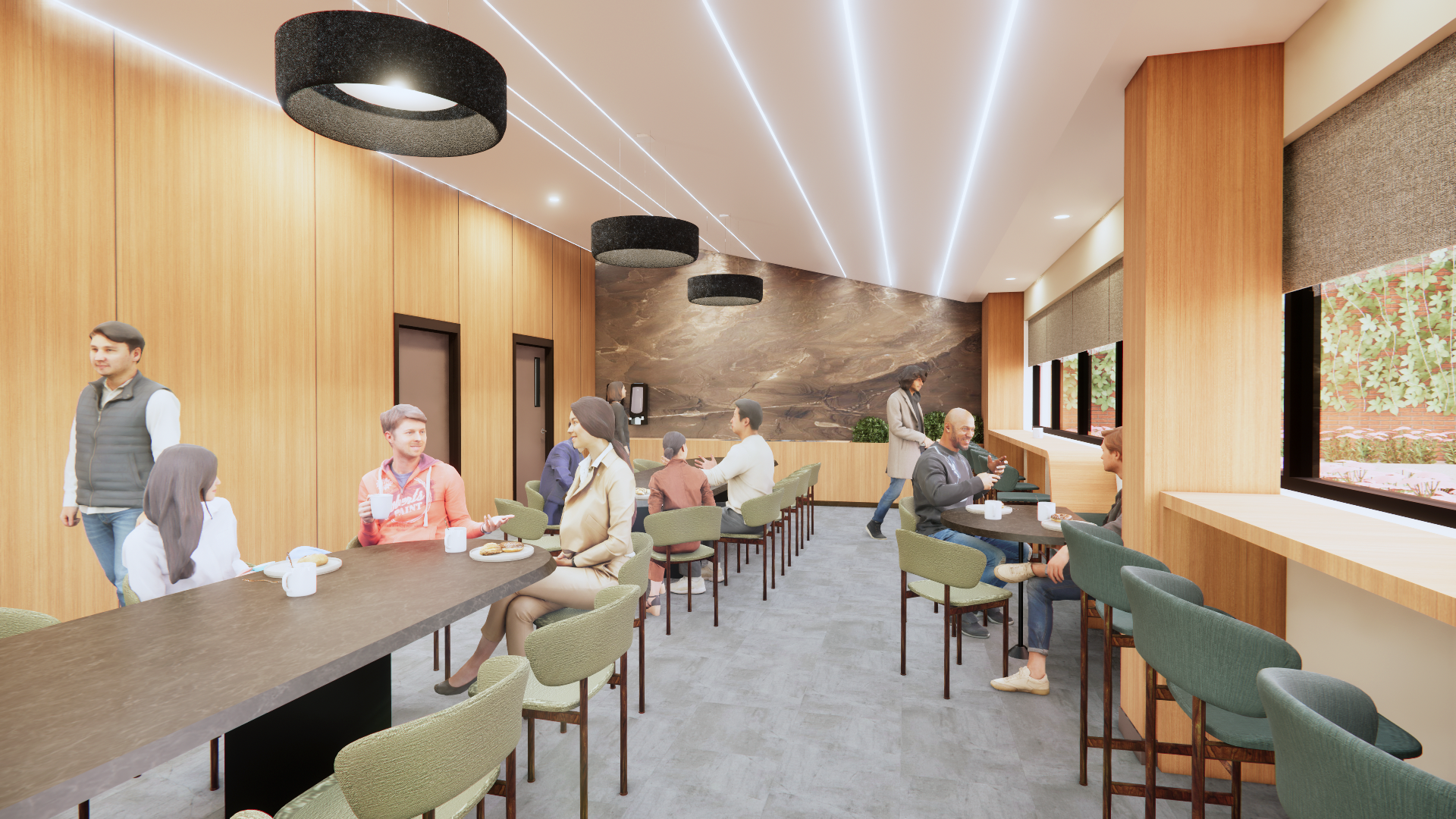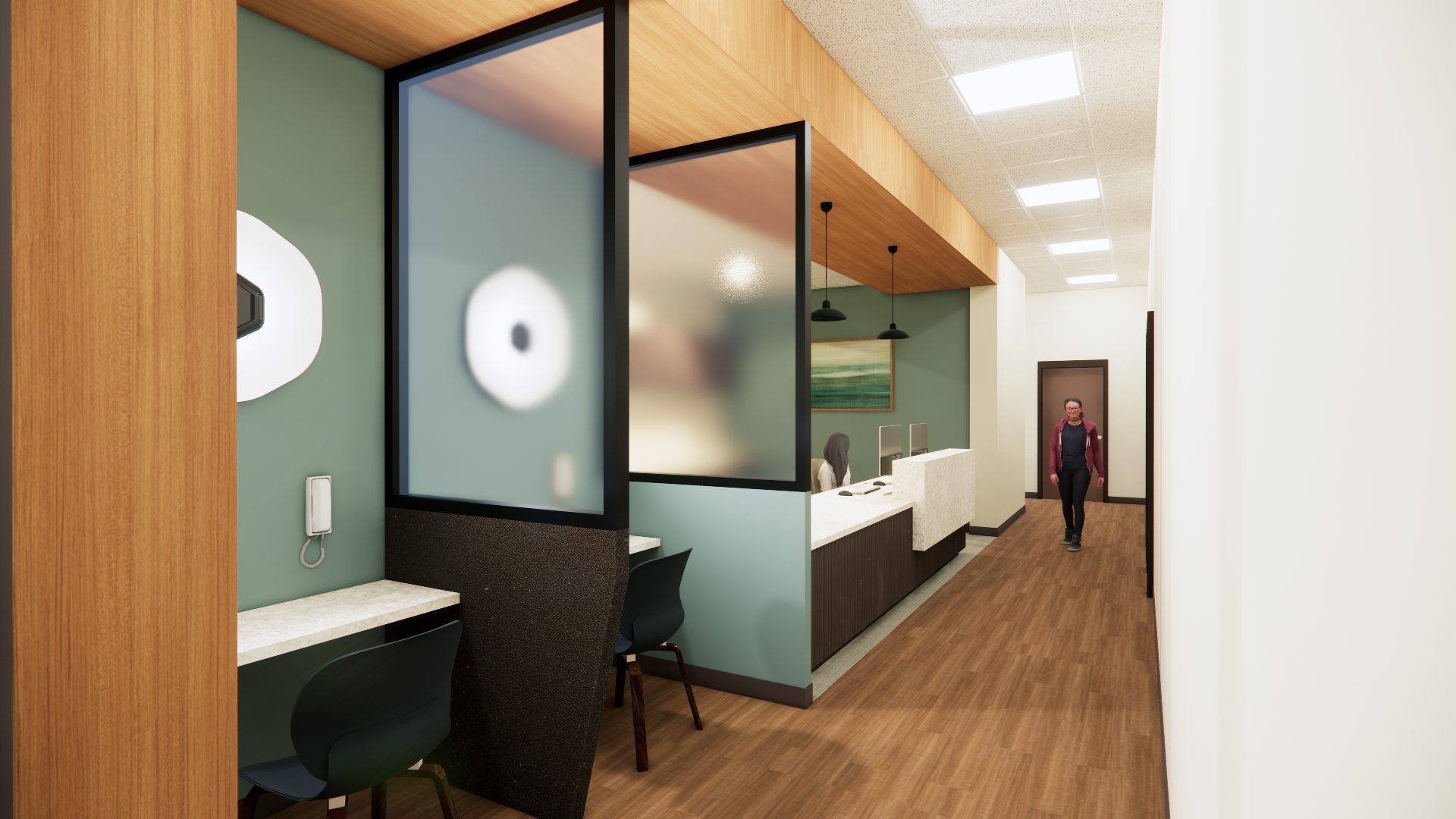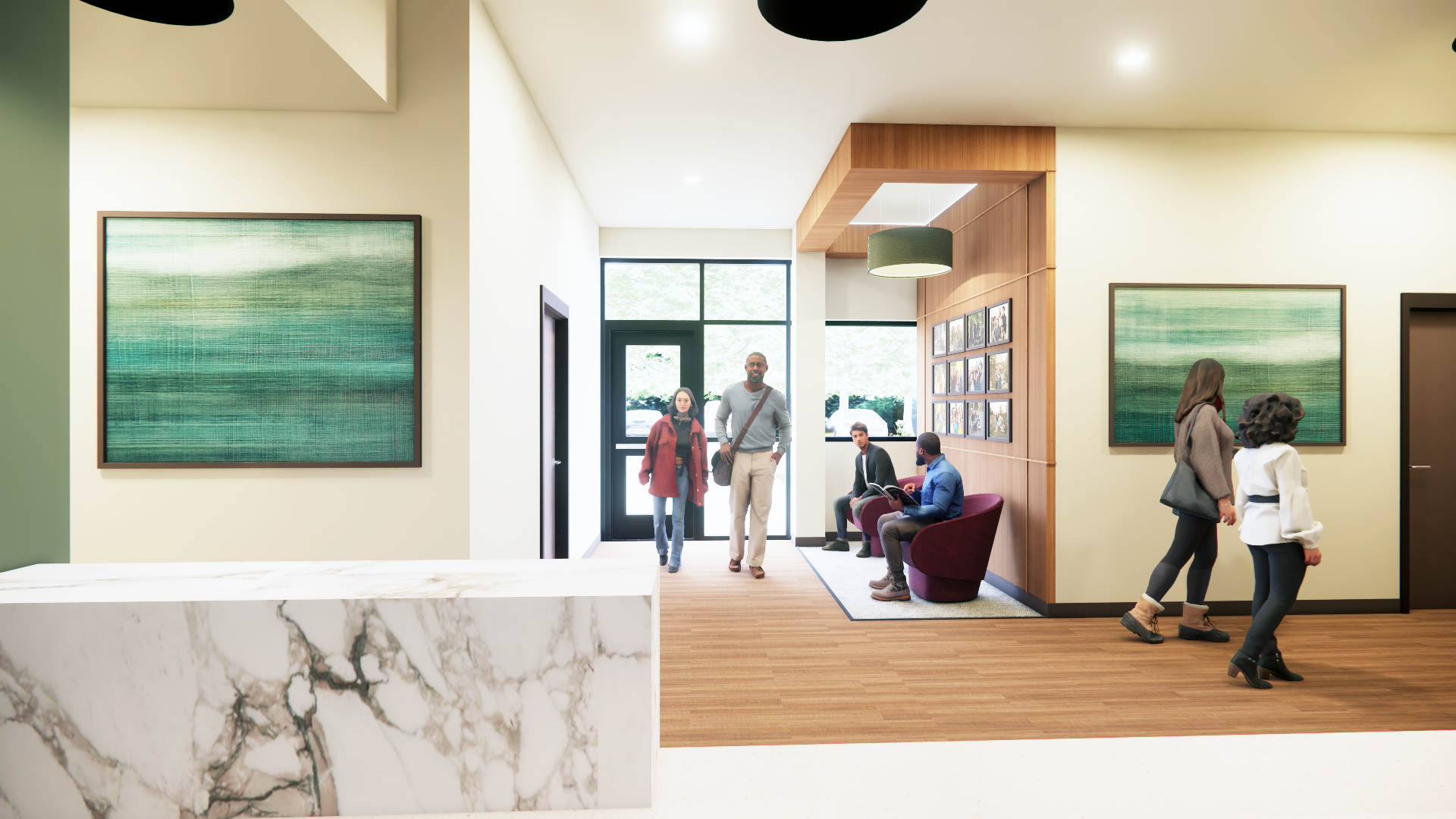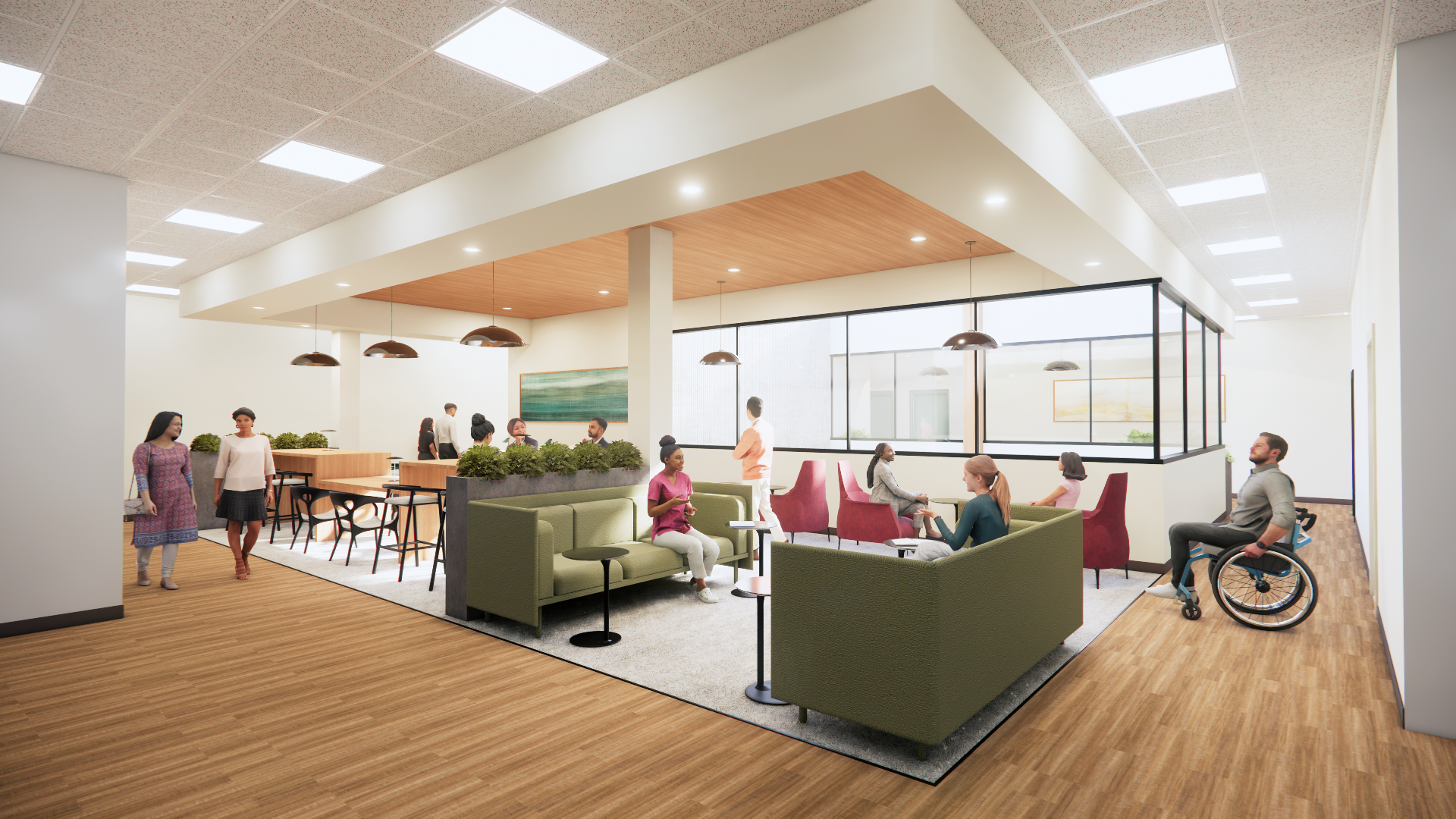Substance Addiction Recovery: Interconnecting Community, Environment, and Technology
Dining
Emma Veronsky // Adviser: Krista Van Wassen
Substance Addiction Recovery: Interconnecting Community, Environment, and Technology
Addiction is not merely a personal struggle; it is shaped by environmental and social forces that often lead to isolation and weakened community connections. In recovery, fostering social relationships is crucial, as shared experiences encourage openness and lasting bonds. Digital communities also play a vital role, enabling individuals to build meaningful connections across distances while expanding support networks and perspectives. This thesis introduces a new model for addiction recovery centered on community, connection, and healing. By integrating inpatient and outpatient care, it fosters stability and continuity, helping individuals build lasting relationships while easing transitions between structured support and independent living. By integrating technology and thoughtful design elements—fostering familiarity, safety, and a sense of control—this model creates environments that feel hopeful and empowering, reshaping recovery spaces into places of growth and optimism.
Inpatient- waiting area
Inpatient- reception
Counselor room
Nurse station
Outpatient entrance
Lounge
Nurse station axonometric view
Bedroom axonometric view









